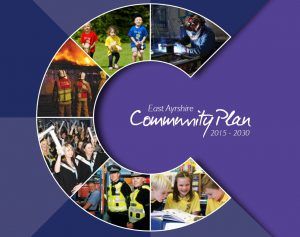Places, People And Planning
Kevin Stewart MSP (Minister for Local Government and Housing) has launched a key public consultation on major changes proposed for the Scottish planning system. This follows a comprehensive independent review of the existing system (SURF summary is available here) which provided 48 wide ranging recommendations published in May 2016.
This consultation marks the next step towards a new planning bill, to be brought forward this year. The views of “developers and businesses, professionals and local authorities, communities and members of the public” are sought on the proposed changes before the 4 April 2017 and can be submitted here.
This brief article provides an overview of the key proposals from the People, Places and Planning consultation report.
Improving The Plan Making Process
Proposals are provided to streamline and strengthen Local Development Plans (LDPs) – these set out how places should develop within a Local Authority area. This includes the suggestion to introduce a statutory link between the LDP and Community Planning, by ensuring that the development plan accounts for the work of Community Planning Partnerships. This is welcomed by SURF as it reflects one of the policy proposals within our 2016 Manifesto for Community Regeneration.

East Ayrshire Community Plan is noted as a good practice example in the consultation report. Image: Community Planning East Ayrshire
It is also proposed that LDPs could focus more on providing strong spatial strategies. This could be achieved by drawing on Scottish Planning Policy for local decision-making on planning applications, rather than these policies being reiterated in individual development plans. To deliver on this spatial strategy efficiently, the report suggests various measures including the wider introduction of Simplified Planning Zones and the use of wider expertise such as development economics.
To improve the effectiveness of public engagement on the LDP, it is proposed that an accessible draft plan with clear proposals could be available for comment instead of a Main Issues Report. Furthermore, the report suggests that there could be more robust community involvement while allocating sites for development in the LDP.
At a regional level, in place of Strategic Development Plans, it is proposed that strategic planners could focus on coordinating development, particularly housing and infrastructure, in conjunction with Local Authorities. Regional priorities would instead be included in the National Planning Framework, developed in cooperation with regional partnerships and infrastructure providers.
Improving Community Involvement In Planning
The report proposes a new right for community bodies to create their own ‘place plans’ which would set out what changes they will help deliver, based on wider community consultation.
During the development plan preparation process, it is also proposed that Local Authorities should be a legally required to consult community councils as well as use engagement methods more likely to involve children and young people. Research is also being undertaken to inform action on including other ‘hard to reach’ groups in planning.

Isle of Rum Land Use Plan is also noted as a good practice example of community involvement in the consultation report (Images: PAS, 2016)
Greater consultation requirements for major and national developments are proposed, with the active provision of feedback to communities during the planning application process. More stringent community involvement is also suggested for development not set out in the LDP.
While third party right of appeal has been rejected by the Government, there are proposals to widen the types of planning applications determined at a local level, including those on major developments and those subject to local review.
Building More Homes And Delivering Infrastructure
To reduce resources expended to determine housing targets, it is proposed that the National Planning Framework (NPF) could lay out aspirational regional and national housing targets. This would then guide housing requirements locally.
The report emphasises the importance of significantly improving housing delivery by proposing that all major planning applications must be submitted with evidence on their economic viability. If this evidence is insufficient, the Local Authority could enable development itself by considering alternative sites. Proposed compulsory acquisition powers could also aid stalled development, including tackling vacant and derelict land. Additionally, Simplified Planning Zones, supported by necessary design guidelines and environmental assessments, could be put in place to allow development without the need for planning consent.

Image: Scottish Government, 2015.
To embed an infrastructure first approach, a non-statutory cross-sector ‘national infrastructure and development delivery’ group is proposed. This group would determine spending priorities, help negotiate the delivery of key housing sites across Scotland, develop proposals for a new infrastructure levy and promote the coordination of LDPs and infrastructure programmes.
Stronger Leadership And Smarter Resourcing
Due to the lack of specialist skills within planning authorities, research is being undertaken to consider skills development and shared services. The Planning Review also highlighted a significant resourcing gap for Planning Authorities. It is therefore proposed that fees could be reviewed and new charges introduced.
As promoted by the Head of Planning Scotland, the report suggests that planning departments could focus on enhancing customer service. Additionally, the Scottish Government will consider the scope of measuring Planning Authority performance on the basis of the quality of places.
To reduce decision-making time scales, it is proposed that certain types of development may not require a planning application. This may include allotments and community growing schemes as well as changes to the use of premises within town centres for regeneration purposes.
